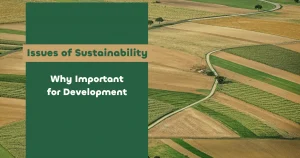
- All articles
Bharat Sisodia and his inspiring work with Miyawaki ‘plantanence’ at the Catch Foundation!
By Ketul
Updated 12 Nov, 2024
10 min read
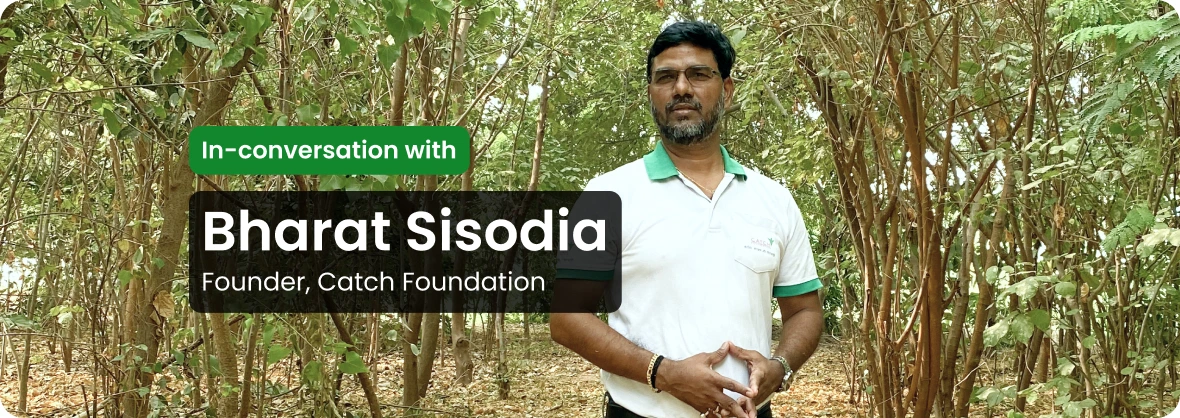
Contents
Who Is Bharat Sisodia and how did he start the CATCH Foundation?
Bharat Sisodia, a resident of Motera in Ahmedabad, worked as an Insurance Advisor for 11 years, when one day, Prime Minister Narendra Modi launched the Swachh Bharat mission that kickstarted something inside of him. Bharat says that the fire that lies within a person sometimes only needs a platform or an external motivator to be unleashed into the world. Since a young age, Bharat had always been interested in getting people together, working in unity and achieving something as a group. He had also been deeply passionate about doing something for his country and nursed an unfulfilled dream of joining the army. So when the Swachh Bharat mission was launched, he saw it as his chance to do something for his society and his country and to give back in his own way. He planned a small event to get his idea up and running. The first event he planned in 2014 was a street cleanup drive that got everyone in his society to come together and work, from children to senior citizens alike.
He was so touched and inspired by the enthusiasm and drive of people joining hands to address a social problem that he needed nothing more to get started on his own personal mission. He knew then that he would devote the rest of his life to educating and bringing about awareness in people for what he believed in – ie greening, waste management and reducing use of single-use plastic. They started to organize different activities and people instantly connected with them and their cause. They started as a movement called Mera Swachh Motera, expanded to Mera Swachh Ahmedabad and eventually formed the CATCH foundation (Creating Awareness To Change Habit) in July 2016. Today, Bharat has more than 500 building societies associated with his Foundation.
What is the work and mission of the CATCH Foundation?
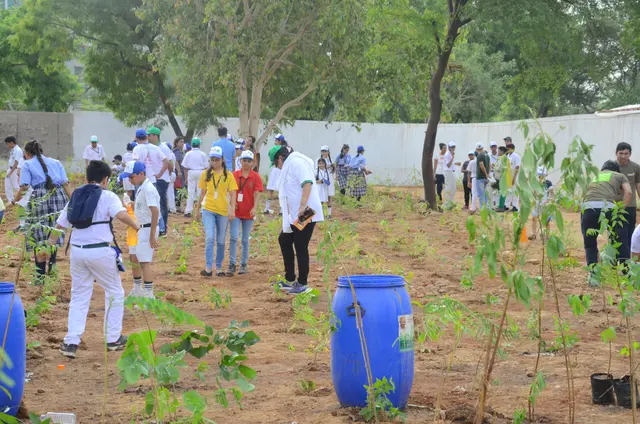
The CATCH Foundation works on three different societal problems and provides solutions for them.
- The first is waste segregation under the S.M.A.R.T Family (Segregating Managing And Recycling Task) initiative. They work on creating awareness of why waste segregation is important and how it can be done. For people who have never segregated waste before, Bharat and his team explain the value of dry and wet waste. So far, they have saved more than 150 tons of dry waste from going to landfills and have helped increase income of waste workers by INR 5000/6000 per month by showing them that they can collect and sell the segregated dry waste. Bharat admits that it takes some time to break old habits through education of waste segregation but is always effective through conversation and raising awareness. As of today, more than 15,000 families have joined them on this mission.
- Their second initiative is the ‘Say no to single-use plastic’ movement. They talked to people around them and identified the most common use of single-use plastic bags to be at the vegetable markets. To provide a solution for that, they brainstormed with their volunteers and tied up with a company to create what they call a Smart Bag – a reusable bag with 5 different pockets inside it so people can go to the vegetable market, buy 8-10 kgs of vegetables and keep them separate in the bag, thus saving them time when they get home and unload the vegetables. To date, over 24000 such bags have been distributed, reducing countless single-use plastic bags from being used. The CATCH Foundation involved school going children and educated them about single-use plastic bags, went door-to-door talking to people, showing them how each person can reduce the use of 5 plastic bags everyday through the use of the Smart Bag. An interesting way that they devised to give the bags out was to set up stalls in vegetable markets and ask people to bring them all their plastic waste from home. People started to bring them kilos and kilos of their plastic waste instead of throwing it in landfills and the CATCH Foundation would give them a bag in exchange. This way, they slowly started to change people’s behaviour towards single-use plastic bags.
- Their third initiative is called Plantanence, plantation + maintenance of trees. The CATCH Foundation has planted more than 3,00,000 trees so far, inspired by the Miyawaki method and created more than 75 urban dense forests with a survival ratio of more than 90% and a 10 times higher growth rate than normal. Their Land Procurement team acquires garden land from authorities like the Ahmedabad Municipal Corporation, Gandhinagar Municipal Corporation, Urban Development Authority, and various universities and hospitals. The Foundation focuses on planting diverse species, 4 trees in one square metre, leading to a healthy symbiotic relationship between the trees and creating biodiversity of birds and animals. At the time of the interview, Bharat was sitting in the middle of one of his dense forests, planted only 3.5 years back, with trees already grown to a robust 25-30 feet height! They are fully committed to maintenance of these trees and raise funds for the same in a variety of ways – corporate sponsorship, adopt-a-tree schemes and selling saplings at their own nurseries. The CATCH foundation has an entirely online, transparent system that helps you track an adopted tree, providing information like its location and the care given to the tree. They pride themselves on having created ‘oxygen paths’ within the dense forests for people to walk through and energize themselves!
What are the on-ground challenges of their Plantanence initiative?
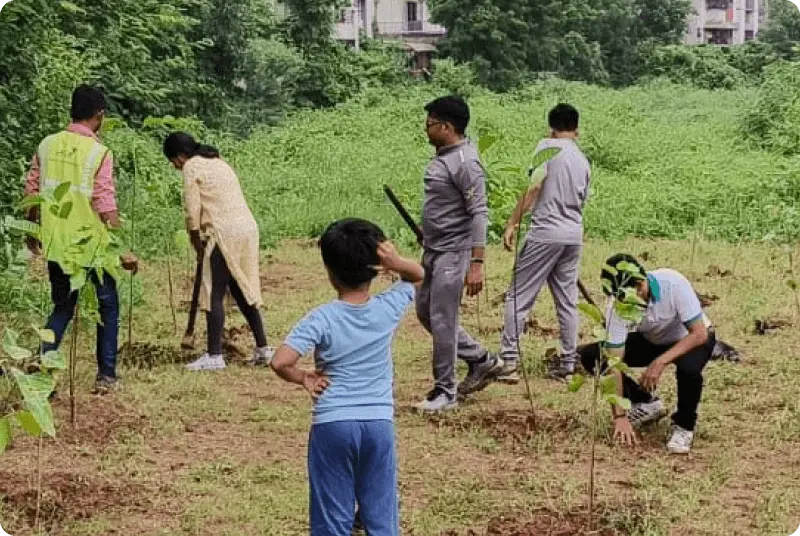
Bharat explains the on-ground challenges that he and his team face in Plantanence with a recent example. They had been allotted a large plot of land for plantation, and their first challenge was to find volunteers who lived in the area, to do the work and to tend to the trees. Needless to say, the CATCH foundation found people passionate enough about greening who were ready to take on the project and see it through! Unfortunately, after planting the saplings, they also realized that the water in the area was not good enough to use. They got through this challenge too with sheer grit and determination. Their managers and volunteers managed to get borewells dug overnight to ensure that the new saplings get water and survive. Bharat has strong faith that along with challenges, the universe also always provides solutions and this faith is what carries him through difficult times.
What does that CATCH Foundation team look like?
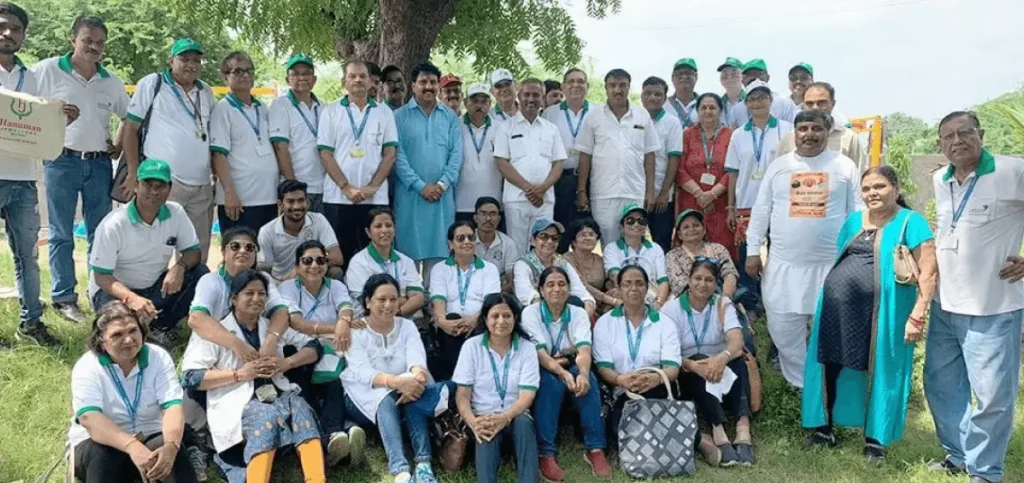
Today the CATCH foundation has over 500 Eco-warriors associated with them, all on a voluntary basis. Each person who joins their cause is added to their Whatsapp group, with chairmen and secretaries of building societies automatically added to the Foundation’s leadership team. They also have a core team who makes it their daily job to visit different housing societies everyday and talk about their initiatives, encouraging people to join them. The main functioning of the Foundation is done through their executive teams such as an Administrative team, a Purchase team, a Training team who works with schools and education and a Coordinators team who helps organize all initiatives. Bharat is proud to share that their organization brings together everyone from children to retired officers from the Army and IAS, housewives to directors of companies. He is grateful that there are so many people who are passionate and eager to do something to give back to society and trust in the Foundation and it’s work.
What are the future plans of the CATCH Foundation?
Today, the CATCH foundation is present in multiple cities in Gujarat and expanding to other cities in the country, with a team already present in Mumbai. Their aim for the end of 2023 was Plantanence of 1 lac trees and their 5 year goal for 2028 is to plant and maintain 10 lac trees!
How can people contribute to the mission?
Bharat explains that the best way to contribute to the mission is to volunteer and to do your bit for any of their three causes. They have also started a new mission to get individuals involved – the Nurture Green India mission. Through this mission, he encourages every Indian, wherever they live or work, to simply plant and maintain 10 trees. Today, he is proud to share that more than 300 people have already joined him on this mission. Bharat hopes that with each person’s contribution, India will go on to be a much greener place in the future!
Related articles

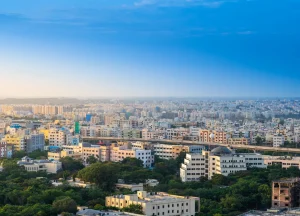
Which are the top 10 Sustainable Cities in India and why?
